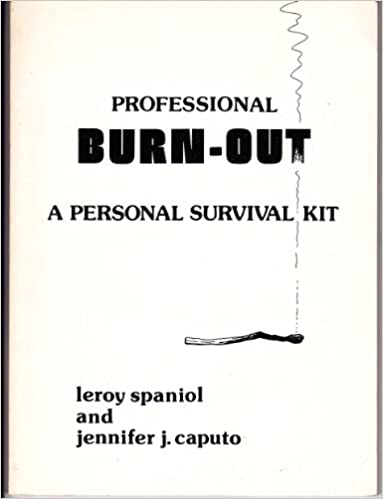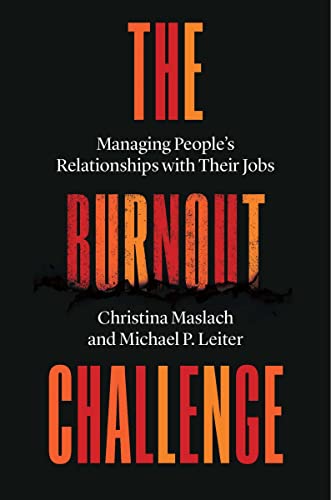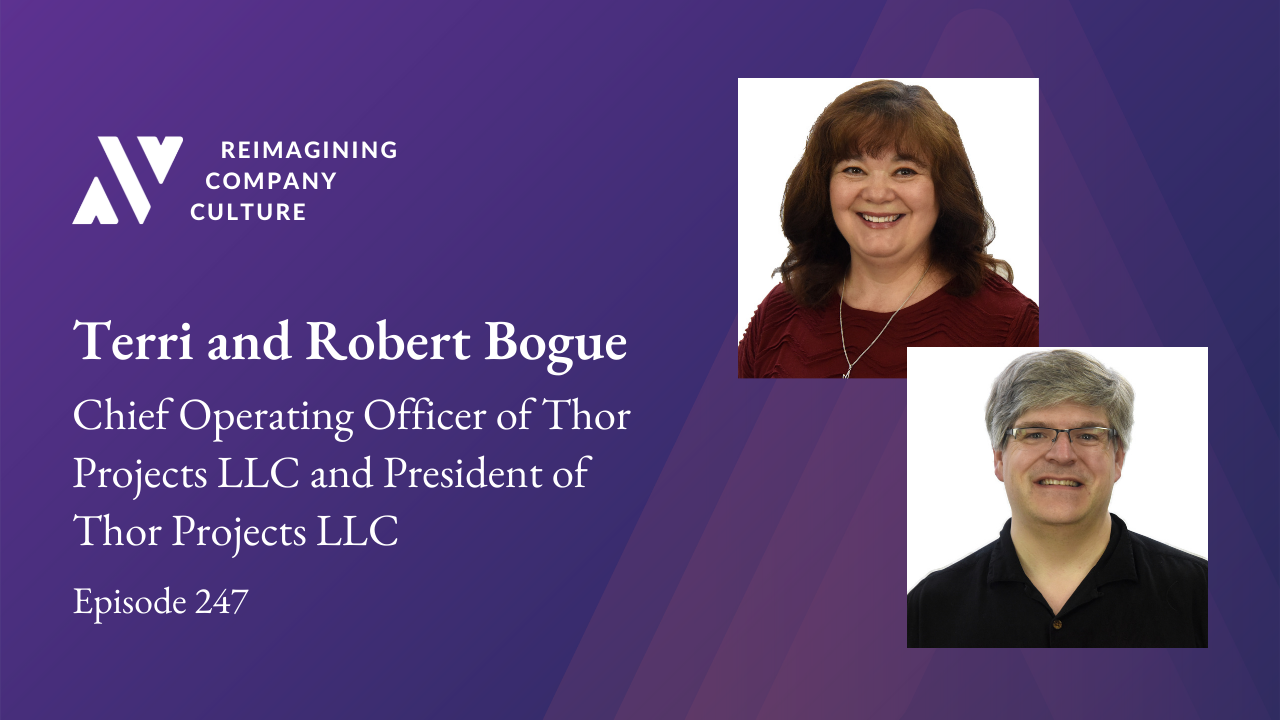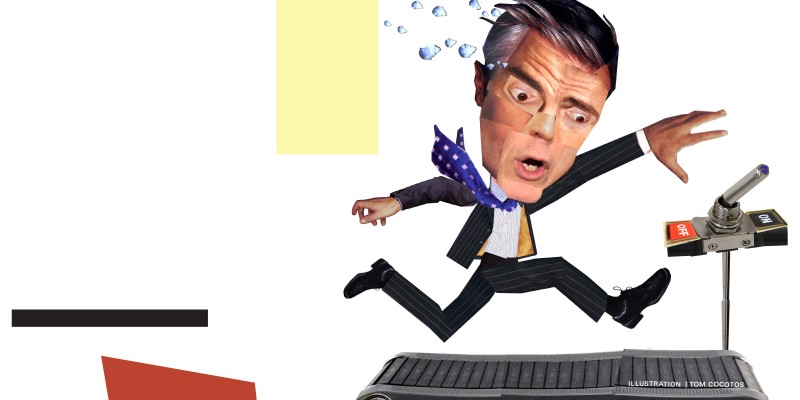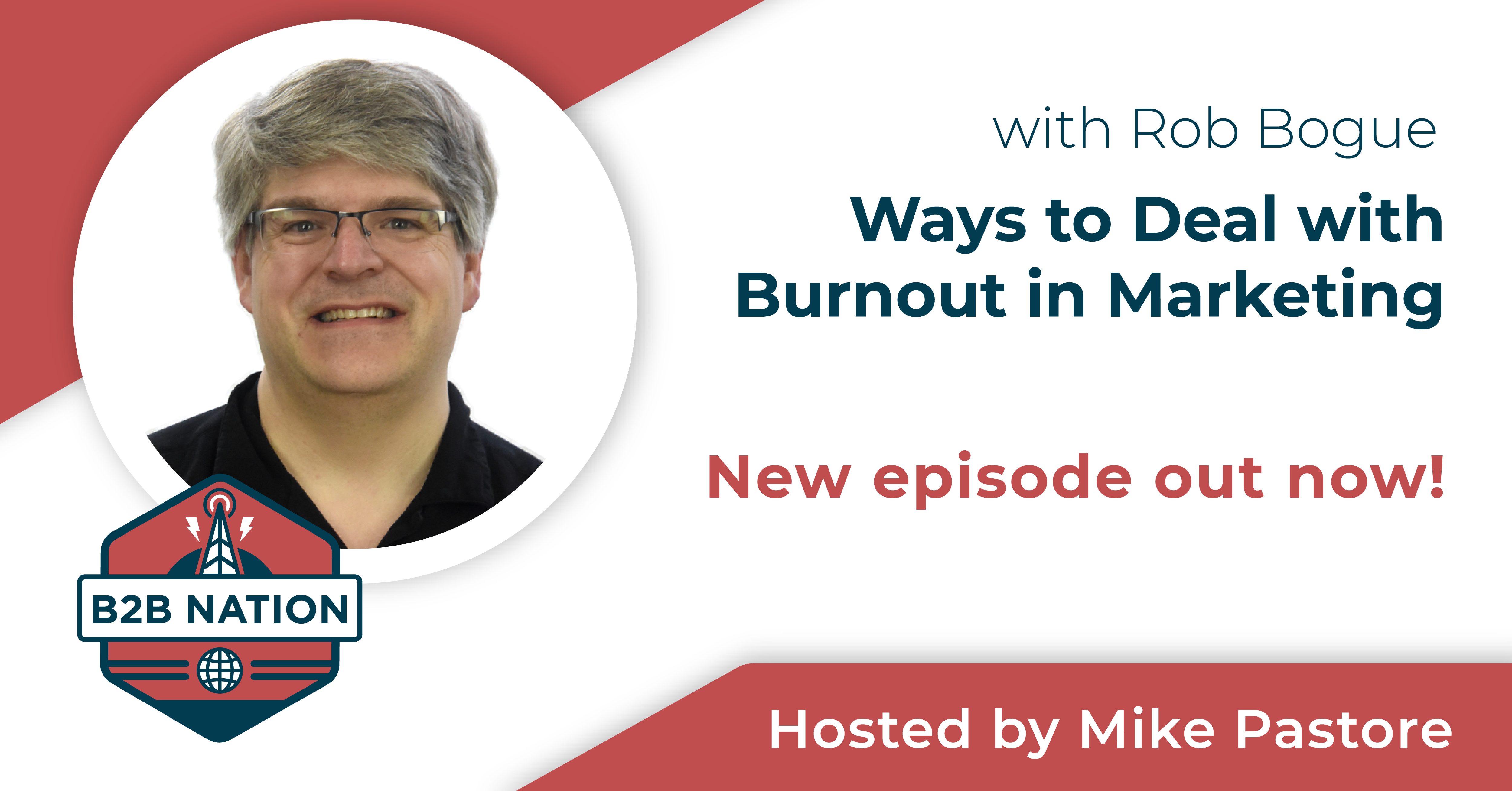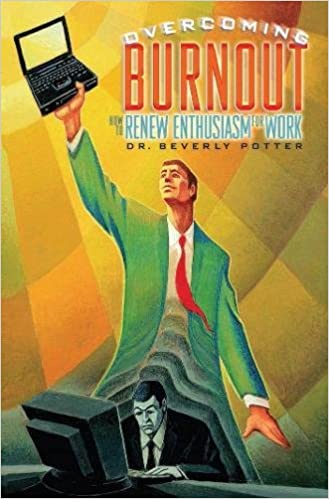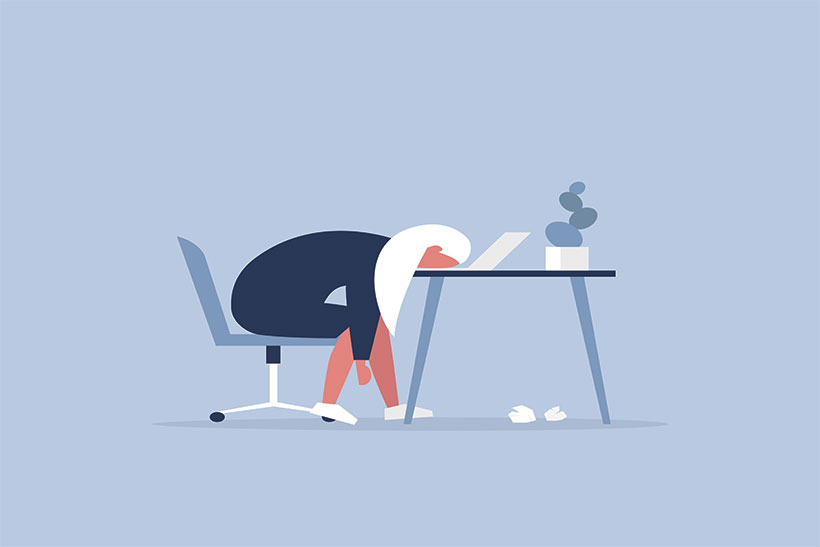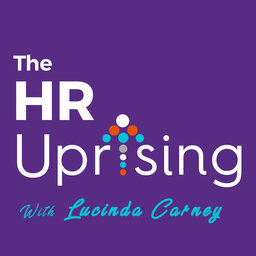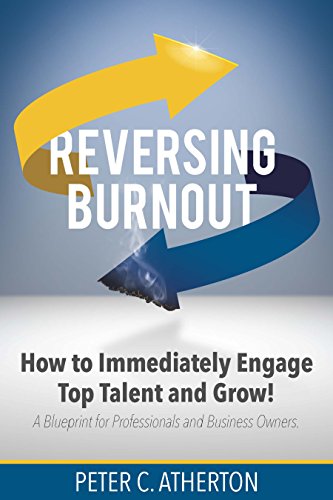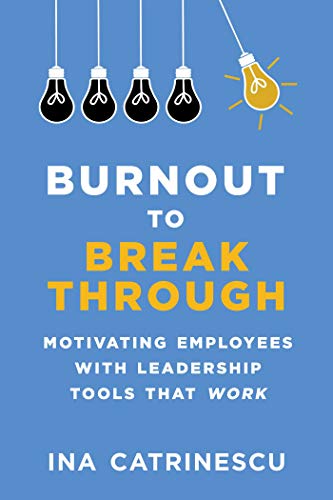Robert Bogue
February 6, 2023
No Comments
“Reheated in a microwave oven” is the best way to describe The Burnout Challenge: Managing People’s Relationships with Their Jobs. It’s a rehash of Maslach and Leiter’s previous book, The Truth About Burnout. I disagreed with their approach in 2018 when I read it, which was originally released in 2000. I had hoped that their update would address the problems with the previous edition – and in some ways, it did. However, it also doubled down on some of the problems of the previous work. I’ll start with the criticisms and then move to finding some value in the work.
I do need to acknowledge that, because we’ve written a book, Extinguish Burnout, and have the corresponding website, we’ve got a competing interest of sorts. Also, Maslach attempted to discredit an article that we wrote about the origins of burnout as a construct – for which we were able to quote page and paragraph from Freudenberger’s original work, Burn-Out. In so much as it is possible, I’ve tried to not allow this to color this review of the book; but at some level, I’m sure it’s unavoidable.
In most situations when I read a book that I so strongly disagree with, I simply don’t write a review. It’s not worth the effort just to dissuade people from reading the book – however, due to the degree to which the book leads people astray and the positive bias that people might have towards reading it because of Maslach’s name, I felt that it was important that I post this review. My hope is that I can illuminate common misconceptions and pitfalls that exist in the burnout space as well as to clarify some of the difficult parts to understand.
Connecting the Research
My biggest disappointment is that the revision didn’t connect to the research that has been done since the previous work. There weren’t internal research citations for burnout work; instead, there were vague references to “research supports” – which isn’t satisfying if you want to see what was really said. Often, what people say research results mean aren’t what they do mean or are even in conflict with the research author’s own interpretation of the results.
It also didn’t connect to work outside of the direct burnout space. Instead, in many cases, the statements in the book contradicted what research in adjacent areas has shown. Let me provide some clear examples:
- Stress – Some of the best work on stress comes from Why Zebras Don’t Get Ulcers. (I wrote three posts to review it.) It explains how stress functions and how it’s a short-term/long-term balance that results in long-term inefficacy, but this is totally missed. Also missed is the work that Lazarus covers in Emotion and Adaptation and Barrett’s work in How Emotions Are Made about the importance of the person’s interpretation. These would have, of course, undermined the premise of the book. If we acknowledge the way people respond to stressors in the environment, we can’t completely blame the environment. Of course, the work on behavior being a function of both person and environment goes all the way back to Lewin’s early work. (See A Dynamic Theory of Personality for more.)
- Psychological Safety – In the space of creating psychological safety, Amy Edmondson’s book, The Fearless Organization, is the landmark. Edmondson and her work on creating psychologically safe workplaces doesn’t get a mention – even though the argument is that workplaces are the problem and that improving safety is at least part of the answer.
- Incompetent Leadership – In numerous places, the book blames incompetent leadership despite having never defined what leadership is in the first place. Of course, many have tried to address this topic, including Burns in Leadership and Rost in Leadership for the Twenty-First Century. The book further sidesteps the skills that would make leadership competent – like those described in The Leadership Machine. Ignored was the work indicating that every layer of organizational hierarchies will struggle with the others, as explained in Seeing Systems. It’s easy to blame the leadership when they’re in the “them” group.
- Intrinsic Motivation – The idea of people’s motivations coming from themselves gets a single reference. Deci’s work in Why We Do What We Do received only cursory attention despite being an important mediating factor to the need for direct organizational/structural motivation. Daniel Pink’s extension to this work in Drive was similarly ignored.
- Teams – While The Burnout Challenge addresses the need for collaboration, there’s no mention of Hackman’s work (e.g., Collaborative Intelligence), Hansen’s work (e.g., Collaboration), or works like Group Genius that would operationalize the concept of collaboration.
- One View of Organizations – The Burnout Challenge views organizations as machines, but that’s only one way to conceptualize them. Also ignored was the work in Images of Organization, which describes how our views of organizations can help us – and hurt us – in understanding and changing them. Other works, like Reinventing Organizations, use the mechanical lens to show how the motivations of organizations and their operation can be different. This allows greater clarity about the kinds of structures that seem to lead to better employee engagement – and therefore less burnout. (Research demonstrates that engagement and burnout are largely overlapping concepts.)
The Errors
In addition to the omissions, there are some direct errors in the work. For instance:
- Equating Moral Injury and Compassion Fatigue – The former is the result of asking someone to do something that violates their moral/ethical standards, and the latter is the result of prolonged exposure to others’ negative emotions. Frameworks would have exposed this. Jonathan Haidt in The Righteous Mind covers the foundations of morality – and the conflicts that can and do arise. Likewise, teaching how to manage moral injury would be useful, as Kidder does in How Good People Make Tough Choices. In Moral Disengagement, Bandura explains how systems are structured to disable our morality – which could address or mitigate moral injury. (Admittedly, this is probably a bad thing.)
- Extensive Research on Burnout – Here, the problem is they assert that the research supports the three-component model of burnout that Maslach uses – exhaustion, cynicism, and inefficacy. While there is research that supports this formulation, it’s also what people were looking for, so the results can be explained by many reasons. As we learned with the Hawthorne effect, things aren’t always as they seem. (See Management and the Worker.) Second, the statements ignore the research that refutes not only the construction that Maslach uses but also that burnout is a separate concept from depression. I do believe there are nuances that separate burnout from depression – but they’re very small.
There are, of course, other errors, but fundamental errors like these are harder to excuse.
Understanding the Criteria
As stated above, Maslach has proposed there are three categories that should be used as the defining characteristics of burnout: exhaustion, cynicism, and inefficacy. However, it’s relatively simple to deconstruct this and realize why the formulation isn’t right. (There are research articles that point to limitations as well, but a simple logical progression will be quicker.) We’ve all been exhausted without being in burnout. Cynicism is what happens when we don’t feel effective any longer – thus leaving us only with inefficacy at the core.
Understanding the relationship between these factors at a deeper level requires an understanding of systems. Donella Meadows in Thinking in Systems explains the basic stocks and flows that drive all the work around systems. In short, we have a reserve of willpower that we consume when we feel ineffective. (See Baumeister’s excellent work, Willpower, for more on willpower.) When that willpower is exhausted, we feel hopeless. The work of Seligman and others on hopelessness indicates that hope is a powerful force. (See The Hope Circuit.) This hopelessness – our feelings of permanent inefficacy — triggers cynicism.
However, there are other dynamics at play. Willpower is a consumable resource but one that recovers. So, we oscillate between hopelessness and the resulting cynicism, and feeling as if there may be hope – and we don’t need to be cynical. The exhaustion component of the equation has its cyclical nature, too. Some of this is rejuvenated when we sleep, even if we’re less tired and more exhausted – feeling like we have no energy. The Burnout Challenge is quick to point out that burnout requires being sustained – and exhausted requires that as well. However, the dynamics of cyclical progression are ignored.
The challenge is teasing out the causal nature of one of the components to the other and the relationships of these cycles. To my knowledge, no one has been able to show these relationships. I am, however, aware that screening high for burnout often leads to screening high for depression.
The Match
Another major consideration is the match between the employer and the employee. While the match itself isn’t explained, there are many dimensions on which one could base the degree of relatedness. Before we get to that, imagine a “surfer dude” in swim trunks, with a long-board at his side, on a southern California beach where the waves are “righteous.” Also consider the immaculate professional in a custom three piece suit, expensive shoes, an expensive briefcase, and a watch that costs more than some people’s homes walking into the board room of a financial services firm in London. Both are precisely fitted for the environments that I described. Reverse the scenarios, and they’re incredibly out of place. That’s the match problem.
It doesn’t mean that the circumstances or the people are wrong. It means that the match is wrong. One of the challenges in The Burnout Challenge is that, though the framing is that there’s a bad fit, the book returns to the good vs. bad dichotomy, which isn’t real. It speaks of six factors (explained shortly) that are about how the employers aren’t being good to their employees – regardless of the match.
It’s described as a match, when the reality is that it hides a negative view of employers, including both management and leadership.
The Six
The six mismatches are as follows:
- Work Overload – Here, the focus is on overworked workers who can’t keep up with the demands being placed on them. See the section on measuring performance below for more on this topic.
- Lack of Control – This is the autonomy that a person has to influence the work they do. (See Compelled to Control for why I hesitate to use the word “control” here.) This is where Deci’s work on intrinsic motivation is briefly raised.
- Insufficient Rewards – Here, the word “rewards” is used as a proxy for both direct rewards and recognition. (For tips on this, check out 365 Ways to Motivate and Reward Your Employees with Little or No Money.)
- Breakdown of Community – Community is the relationships with supervisors, peers, and the broader organization. See the section, “Social Capital,” for more.
- Absence of Fairness – The perception (or lack thereof) that decisions are made fairly – that is, impartially. See the section, “Equitable,” for more.
- Values Conflicts – When things that the individual finds important aren’t important to the organization, burnout is likely to arise, because they see no progress on the things that are important to them.
Measuring Performance
Let’s take a quick look at retail performance. It’s measured in inventory turns – that is, how fast merchandise is sold on average from the shelves. Here’s the official numbers from a retailer that we all know:
- 1994 – 3.45
- 1995 – 3.75 (8.7%)
- 1996 – 3.66 (-2.4%/6.1%)
- 1997 – 3.85 (5.2%/2.7%)
- 1998 – 3.98 (3.4%/8.7%)
- 1999 – 4.01 (0.8%/4.2%)
- 2000 – 4.22 (5.2%/6.0%)
- 2001 – 4.75 (12.6%/18.5%)
- 2002 – 4.56 (-4.0%/8.1%)
The first number is inventory turns, the second number is improvement, the third number is the two-year improvement. Any guess at the retailer? If you think that it’s Walmart, you’d be wrong. It’s the competitor that Walmart crushed: K-Mart. Home of the blue-light special improved its performance – but not enough. Walmart’s performance for the same period was:
- 1994 – 5.14
- 1995 – 4.88 (-5.1%)
- 1996 – 5.16 (5.7%/0.4%)
- 1997 – 5.67 (9.9%/16.2%)
- 1998 – 6.37 (12.4%/23.5%)
- 1999 – 6.91 (8.5%/21.9%)
- 2000 – 7.29 (5.5%/14.4%)
- 2001 – 7.79 (6.9%/12.7%)
- 2002 – 8.08 (3.7%/10.8%)
It wasn’t that K-Mart wasn’t improving – they were. Just not fast enough. The question of performance is always relative to some reference point, and in this case, the point of comparison is the competitor. K-Mart simply couldn’t keep up with these numbers.
In the context of burnout, we have two forces working on us. First is the force of the external expectations of the organization, and the second are our own expectations. The external expectations can be out of sync with reality. For all of the negatives of Fredrick Taylor’s Scientific Management, it did have the benefit of being able to identify standards and norms for individual activities – and thus set reasonable expectations.
The unfortunate reality of today is that most organizations have no idea what a normal level of performance should be for many of the tasks performed. They simply accept the results that their current employees are achieving. When employees are replaced, this can lead to massive disconnects, as the previous person may have had the temperament and skills that made them perform the task substantially better than average – or substantially poorer. When working with external expectations, it’s important to evaluate what they’re based on – and why those results may need to be adjusted. Dan Ariely explains in Predictably Irrational that we often fail to correct our initial assumptions sufficiently.
Internal expectations are often more challenging. They’re based on a desire for maximization (see The Paradox of Choice), perfectionism (see Multipliers), or simply previous conditions that no longer apply. They may be expectations that were once external by parents, coaches, or others that have become internalized and now feel like truth. When we’re facing internal expectations, we often need to find ways to develop better acceptance of ourselves. (see No Bad Parts and How to Be an Adult in Relationships for more on acceptance.) That isn’t to say that we shouldn’t maintain a desire to get better. Carol Dweck in Mindset explains how a growth mindset allows for growth while acknowledging the current conditions, and Anders Ericsson and Robert Pool in Peak explain how to take that to excellence.
It’s important to note that, clearly, internal expectations aren’t the responsibility of the organization; they’re something that each of us bring to the organizations we join.
Social Capital
Robert Putnam’s work in Bowling Alone is a classic as it relates to the concept of social capital – that is, our ability to get things done because of our relationships. In his follow up book, Our Kids, Putnam explains how this social capital impacts our children. In the organization, most HR professionals know that people join organizations, but they leave managers – and sometimes the group dysfunction that managers allow to continue.
As humans, we need relationships: to be expelled from our communities was a death sentence. We need to depend on others to share the work and make the load lighter. (See Healthy Dependency in Relationships for more.) In the context of work, relationships are with our manager and our peers. If they’re good, they’re a shield that will stop us from considering other offers or leaving when we’re upset. If these key relationships aren’t right, then nothing will be right.
For the most part, these relationships can’t be directly controlled because of the variation in perspectives, experiences, and values, but there is one way that organizations can ensure they get better outcomes. That is to insist on accountability. (See The Four Disciplines of Execution for more.) That’s no guarantee that there will be good relationships, but it makes it more likely.
Equitable
We need to understand why fairness is so important. To do that, we can look at a game that economists use. It involves two people and $10. The first person picks the split between the two people, and the second person decides if either of them get the money. From an economic point of view, any split between them should cause the second person to accept the deal, because they’re better off for it. (See Drive, Choosing Civility, The Marketing of Evil, and Positive Psychotherapy for coverage of the ultimatum game – it’s very popular.) However, the economist view isn’t the one that happens. When the balance between the two gets shifted away from the second person by about 60-40 or 70-30, they start saying no. By 80-20, it’s even more profound. But why?
It appears that our evolution has necessarily involved the addition of anti-cheating responses. Richard Dawkins in The Selfish Gene proposed that genes were exclusively selfish. However, Robert Axelrod in The Evolution of Cooperation showed how collaboration could be adaptively evolved. Jonathan Haidt in The Righteous Mind expressed a similar sentiment – with much less math. The evolution of cooperation requires a way to identify cheaters and punish them. Thus, when we detect people trying to cheat us – to not be fair – we have a natural reaction to try to punish the cheater. That means we have to detect the problem, and some of that relies on the way we view the situation.
At first, it appears as if equitable and equal should be the same. If two people receive the same amount, then it should be equitable. Fair enough. However, what happens when the amount is a percentage increase? Someone making $1,000,000 getting a 10% increase gets an extra $100,000 while the person making $50,000 gets an extra $5,000. Is that equitable? Maybe, but maybe not. It depends on your framing.
If you’re focused on the amount, then it appears unfair – even more unfair than in the ultimatum game. If you are focused on the percentage, you recognize it as “fair” because it’s equal. So, here, there’s an important message for organizations: make sure that what you’re doing appears as fair as you intend it to be. The Righteous Mind considers fairness (and not cheating) a foundation of morality, and certainly this rings true. It’s foundational to the way all people view things. There are competing possibilities for the ultimate moral decision, but largely we all believe we should be fair. Being effective at maintaining employee engagement (and thus avoiding burnout) includes emphasizing the ways in which the decisions are fair.
Collaborate Within, Complete with Outside
Morten Hansen in Collaboration makes the point the most clearly. You must keep competition on the outside and collaboration inside. He’s not alone: Group Genius, The Culture Puzzle, Bowling Alone, Collaborative Intelligence, and even The Hidden Brain express the same sentiment. Competition inside of groups is bad. However, the question becomes how large is the collaborative vs. competitive group? For the most part, organizations have abandoned the review approach of stacked ranking, where members of a group are sorted from best to worst, and typically the worst are let go. Clearly, this was bad, because it set up inherent competition in the group. However, what about different divisions in the same organization? Steve Balmer’s reign at Microsoft was filled with inter-group conflicts, which may have been part of the reason why the stock price was flat for such a long time.
The Burnout Challenge equates this competitive group aspect with a culture of fear. In the context of losing a competition, that’s fair – however, it’s in many ways too broad a characterization of the safety (or fear) that someone feels at an organization. This is just one aspect of the story. If the organization utilizes competition internally, but even the losing group retains their jobs and gets other interesting assignments, it’s possible and probable that they’ll feel safe.
Self-Employed
One curious condition arises when one thinks that it’s the leadership’s fault that you’re burned out. What happens if you’re self-employed? Who do you blame for being overworked and under recognized? The answer is yourself, obviously – but what do you do about it? The challenge with the framework laid out in The Burnout Challenge is that there’s very little you can do. Because the model doesn’t account for perceptions or our ability to change our perspectives on the same objective facts, we’re left stuck.
Mind the Gap
For us, the issue is really in the gap between expectations and the results that you believe you’re getting. If you believe that you’re getting the results you expect, you will feel effective, and you’ll avoid burnout. These expectations can either be internally driven – that is, what you expect – or externally driven – what the organization or your manager expects.
It’s entirely possible to be in a situation where expectations are misaligned – but they’re your expectations of yourself, not the expectations foisted upon you by others. One of the key things we tell people is that most of the requirements for what we do aren’t the requirements of others but are instead the way that we believe we should behave. It’s not about the boss that expects that there won’t be any typos – it’s the expectation we have for ourselves.
This has two implications. First, it’s this gap that moves us towards burnout, and it takes a lot of support and self-care to avoid burnout. Second, it means that burnout can be entirely internally driven and doesn’t necessarily require the influence of the organization at all. (See The Paradox of Choice and Multipliers for the impacts of maximization and perfectionism.)
Band-Aids
One of the most useless things for burnout – in the long term – is a two-week vacation. Many of the popular solutions to burnout is to offer people massages at work or encourage them to take a two-week vacation, but the truth is that this is just an opportunity to recover. It doesn’t address any of the fundamentals of the situation that led to burnout in the first place. As the old saying goes, if nothing changes, then nothing changes. You can’t expect to stay out of burnout if you return to the same situation that led to burnout with the same tools. You either need to change yourself, change the situation, or get new skills.
Is This Thing On?
Are you listening to the feedback you ask for? If not, you’re contributing to the idea that their work and opinions don’t matter. It’s the harsh reality for too many organizations. They must execute an employee survey every year, because someone told them they had to. They might even say that the items identified in the survey will be addressed – but far too often, the survey is done, and no one has any idea how to convert the feedback into a set of actionable steps to change the outcomes.
The bigger problem with this behavior is that it breaks the trust that you will pay attention, the result of which is that people stop telling you the truth about the situation, making it nearly impossible to recover.
Where the Lever Breaks
I’m all for leverage and scalability. I love finding simple solutions that have great returns. It’s magical when you see it happen. One could easily accept The Burnout Challenge’s assertion, “Where major advances in workplace well-being occur, they come through better workplace design, not through supplying organizations with tougher employees,” if it were not for our knowledge that this rarely works. It’s the strategy fallacy. Sometimes, it’s called the “planning fallacy,” and it’s apparent in the way that we run projects differently today.
It used to be that we’d run waterfall-type projects with big, upfront planning of what we wanted and a large development cycle. It worked well for hundreds of years, as engineers built bridge after bridge and building after building. There were some notable failures, but they were always explained away as aberrations. The Tacoma Narrows Bridge failed, because new materials in use elevated aerodynamics to a point of concern. As long as the projects were the same, things worked relatively well, even if tragedy occurred when things did change.
Software development through the 1980s used this model with dismal results. Projects didn’t work, they were late, and more over budget than the Sydney Opera House. As a result, in the late 1980s, a shift started happening towards what is now called “agile development” or “agile approaches.” Unlike big, upfront planning, it recognized that there were things that had to be learned along the way, because every project was essentially unique.
Agile approaches are iterative, emphasizing making small changes, learning, adapting, and trying again. This allows teams to learn during the process and discover challenges that simply can’t be predicted. That’s where the great level of strategy breaks – where it encounters an unanticipated problem. When it comes to people and their perceptions, there are always unanticipated problems. Consider The Coddling of the American Mind, which explains how we’ve attempted to warn people that they may be triggered by content only to discover that students continue to be triggered by content – just not the content that the instructor expects.
To be clear, I’m not opposing strategy. We need a strategy. However, we need to accept that strategy isn’t the only solution to the problem. It’s not a case of whether we need better designed organizations or tougher employees. The simple fact of the matter is that we need both – or rather, we need to accept that strategy isn’t enough. We don’t need tougher employees – we need employees that are more equipped to handle the slings and arrows that life throws at them inside and outside the organization.
Match Matters
The major premise of The Burnout Challenge isn’t without merit. Match does matter. When you’re in an organization or a position that doesn’t match your skills or temperament, it can move you towards burnout. However, the key is understanding how that happens – so you can intervene and prevent it.
If burnout boils down to perceptions of efficacy, then how does a bad fit lead to less efficacy? Physics has the answer. When one object collides with another, and there’s no energy converted to friction, the entire energy is transferred to the second object. (In practical terms, there’s some deformation and therefore energy conversion to heat, but it doesn’t matter for this example.) Perfect alignment means almost perfect energy transfer.
Consider that we’re measuring efficacy based on how far to the North an object travels, but instead of being hit square, our object is hit at a 60 degree off-axis angle. The energy is still imparted to the second object, but the yield from that energy is literally half of what it would have been had it been an aligned transfer of energy.
If we’re still expecting our full efficacy – and we are – then we’ll feel like we’re coming up short, because we are. When we mismatch with an organization, we struggle, because there is so much effort spent adapting to the mismatch, and that friction and misdirection makes us feel less effective. That lack of efficacy, in turn, leads us to burnout.
So, while there are many things with The Burnout Challenge that are wrong, we can recognize that match between person and environment does matter.
